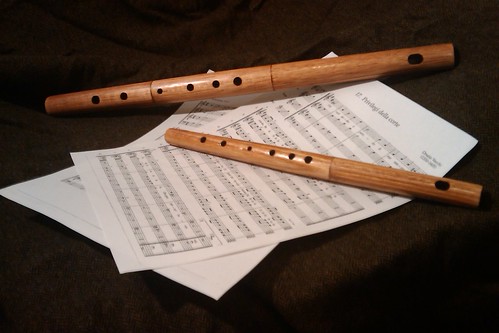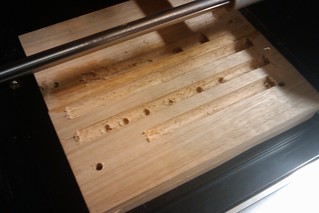Below you can see a couple of flutes that I've made with it. These are made in semicircular sections that I then glue together.
The MDX-20 has a cutting area of 200mm x 150mm, so I can cut several sections at once. Of course it would be nicer to have a longer cutting area so I could just cut the top and the bottom and glue them together.
I first cut the inside:
The workpiece is on top of another piece of wood. To ensure the two sides are aligned, I have the mill cut some holes, then drill them through into the base, then I flip the workpiece and anchor it with wooden pegs. Then I cut the outside:
After gluing the pieces together, I sand them smooth and apply linseed oil and a little wax. I have been using raw linseed oil, but I recently found a supplier of boiled linseed oil in Queensland called Olde World Paints. (Linseed oil with added poisonous metallic drying agents is sometimes called "boiled". This isn't that, it's genuinely boiled.)
The end of the flute is stoppered with a cork, which I also mill.
- make-instrument - code to designs various instruments (hole placement and bore shape), and then create STL files
- make-instrument/designs - various instruments I've designed
- control - code to turn an STL file into a height map and then generate a milling path from it
I'm using Blender for constructive solid geometry, but I'm considering switching to OpenSCAD or just CGAL. The code is all extremely rough at this stage, just polished enough that I can run it myself! I'm hoping to turn it into a nesoni-style tool-suite eventually.


